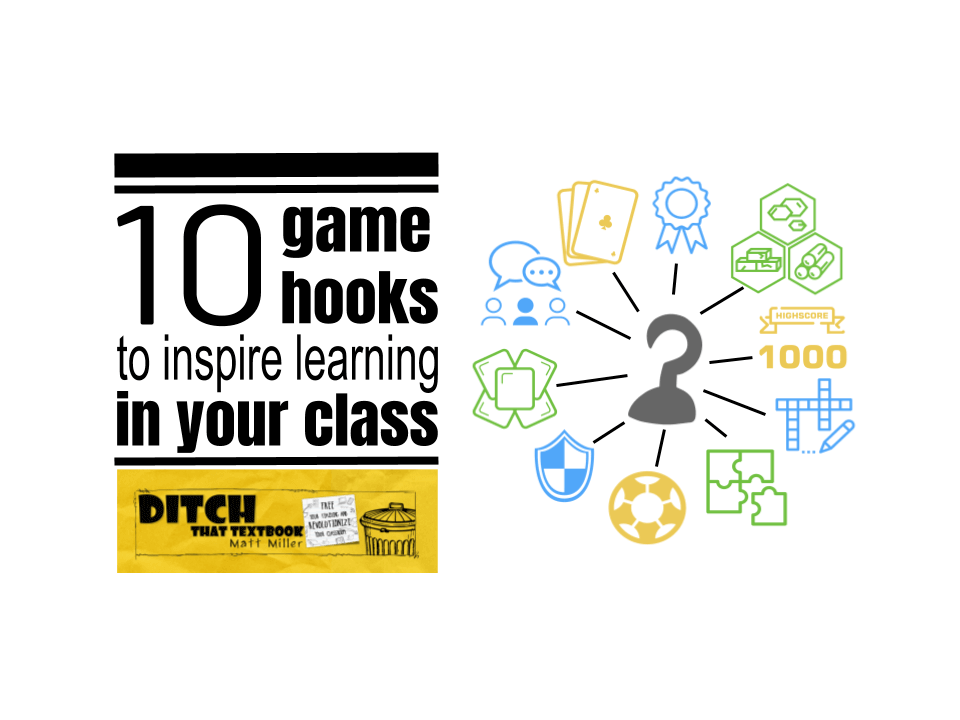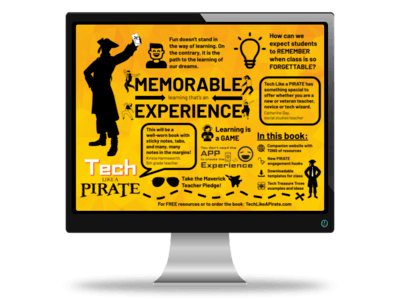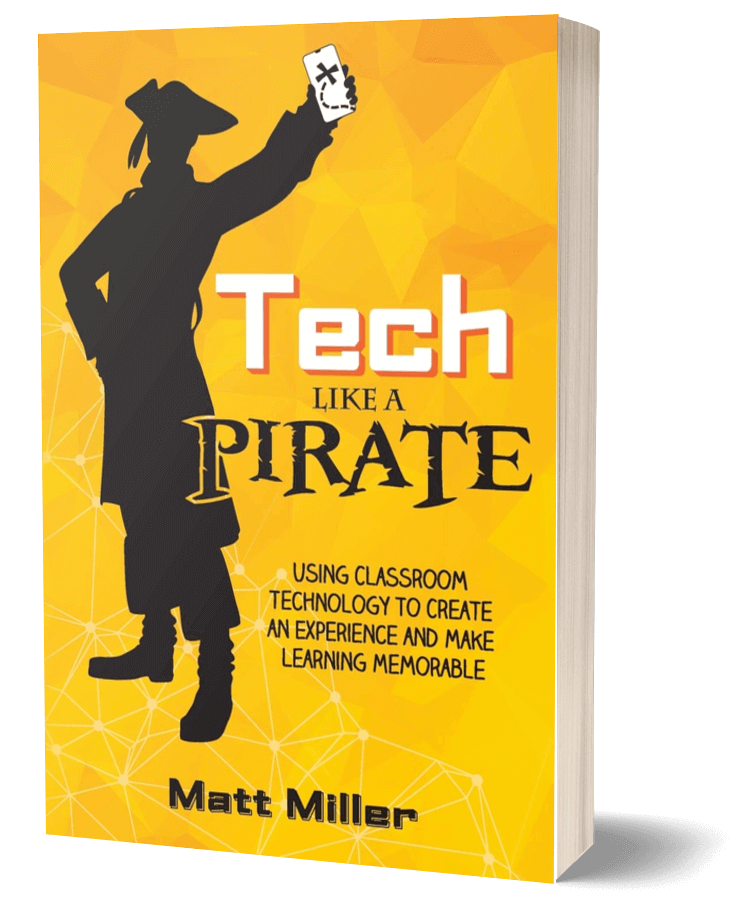
As children, we play Chutes and Ladders and Memory.
When we get older, we play Monopoly and Settlers of Catan.
On our phones, we play Candy Crush and Pokemon Go.
We're even playing games when we collect Starbucks stars and airline rewards miles.
Games are a huge part of our lives. They help us pass the time. We get in a flow state when we're deep in a strategy game. And we laugh when we draw pictures or act silly with friends.
Even the smallest game element can transform a dull learning activity into an experience. The trick? Finding the right way to connect the games and the learning together.
Thankfully, we have LOTS of examples to draw upon. By looking at popular games, we can learn what successful game elements -- or hooks -- they use. Ideas can come from the following. Borrow from the best!
- Board games
- Video game consoles (like Xbox and Playstation)
- Mobile app games
- Retail rewards programs
- Playground games
- Role playing games
Below are 10 game hooks you can use to add small game elements -- or total gamification -- to your class!

1. Collecting badges for accomplishments
Examples: Fortnite
Completing an accomplishment in a game is good. But it's more fun when your friends know you accomplished it! Earning badges is spreading all over, from the board room to the classroom to a variety of mobile apps.
How to use it in class: Identify an accomplishment to reward. Create a badge. They can be digital badges, paper badges, stickers ... even badges within a game portal like Classcraft. Based on the level of motivation, badges can be enough -- or they can be accompanied by another reward.
2. Collect points to buy things
Examples: Starbucks Stars, hotel and airline rewards programs
This game type is similar to the first in our list: the accomplishment badges. The difference? Instead of compiling a collection of badges, the players can use what they earn to buy things. Points become a currency. The strategy is in whether to spend or save, and what to spend on. This may be one of the easier game hooks to implement.
How to use it in class: Identify the actions students must perform to earn points. It could be academic tasks. It could be demonstration of skills. It could even be character traits noticed by the teacher or other students. Then, identify what students can spend points on. Don't worry about buying lots of rewards! Simple privileges can work, like seating choice, assignment choice, special attention, etc. Food and drink can be an inexpensive way to reward if you want something more tangible.
3. Solving a puzzle/problem solving
Examples: Clue
A puzzle to solve is like an unfinished story. We want to see the loop closed. Incomplete puzzles leave us unfulfilled! All sorts of puzzle games exist, from number puzzles like 2048 to "find the solution" puzzles like Happy Glass to a "whodunit?" game like Clue.
How to use it in class: Student solve puzzles in class all the time. We just call them "questions" or "problems." Sometimes, it's as simple as reframing them to puzzles. (A word of caution, though. Using carrot/stick rewards (do this and I'll give you that) is not the ideal motivator for creative, conceptual tasks, according to Drive by Daniel Pink. The inherent draw of those challenges usually motivates better. Carrot/stick rewards are better for what Pink calls "routine, algorithmic tasks."
4. Amass the best collection
Examples: Monopoly, Pokemon Go
"Wait. You have one of those?" "Wow, I wish I had all of those like you!" In games where collections are key, it's all about curating the best set of assets. In games like Monopoly, the collection serves a greater purpose -- charging rent and growing wealth. In games like Pokemon Go, it's two-fold. The better beasts win more battles. But the bragging rights of an impressive Pokemon collection can be equally motivating.
How to use it in class: Start a set of items that students can collect. They can be characters, actual physical objects, power-ups, etc. Having them may give students certain privileges. Students draw an item after completing a certain task. Drawing cards out of a basket or something similar replicates encountering a random Pokemon to catch. Creating some rarer finds and lots of common finds can make getting the rarer ones more exciting! (Note: telling students how many of each item there are makes identifying common/rare items easier.)
5. Role-playing games
Examples: Dungeons and Dragons, Final Fantasy, World of Warcraft, Magic: The Gathering
One of the big draws of a role-playing game is the character you play. Character types often have strengths and weaknesses. Sometimes, they have certain tools, weapons, and spells available to them that other characters don't. In Dungeons and Dragons, you can choose among barbarians, druids, clerics, wizards and more. In these games, developing a character and his/her persona is half the fun.
How to use it in class: Identify a class game theme (i.e. medieval times, Star Wars, fantasy, sports). Then, identify the types of characters and what their attributes are. Each character has higher or lower ratings in a given attribute. Determine how each attribute connects to class and how students can add (or possibly decrease) their ratings in each attribute. When students complete a task or demonstrate a skill in class, they can earn power-ups for their attributes.
6. Develop a skill
Examples: Operation, Ballz, sports simulation games
Practice makes perfect, right? We love the control of being able to improve our skills to a point where they give us an advantage in a game. Great shooters can't be ignored in basketball. Someone with a steady hand is the favorite when playing the classic Operation board game. And seeing an impressive high score in the mobile app Ballz shows how much the player has practiced.
How to use it in class: The skill can be academic in nature. By objectively showing how adept you are at a certain skill, you can climb the leaderboard. The skill can be part of a game that's fueled by academics. For instance, my students played "trashketball" where they shot a ball in an empty trash basket for points. The farther away, the more points they earned. Students practiced to hone their trashketball skills in my class. But they only got to shoot when they answered questions correctly, rooting the game in learning.
7. Sandbox games (build an empire piece by piece)
Examples: Clash of Clans, Settlers of Catan, Minecraft, Sim City
Sandbox games give their players something that students crave: freedom. Go anywhere on the map. When you get there, do anything you choose. Interact with what you find there and see what happens. Sometimes, there are storylines to be followed or challenges to try. But sometimes, the world is just out there to explore.
How to use it in class: Freedom of choice is a wild, untamed, powerful-yet-scary realm of education. To tap into the hook in these types of games, it requires a bit of letting go. For instance, in Minecraft, players are given a plot of land and the freedom to do whatever they'd like in it. In your classroom, students can explore a broad topic however they like as long as it's in the confines of that topic. Choices could be as narrow as selecting between two or three narrow topics.
On another side of the sandbox games realm, students can present their findings in a Clash of Clans/Catan/Minecraft/Sim City style -- or even within some of those platforms!
8. Fact and information recall
Examples: Trivial Pursuit, Scrabble, Boggle, Trivia Crack, Jeopardy!
These games are a mixture of trivia games and word games. They play upon the existing information you already have in your head. They quantify what you're able to conjure from your mind in different ways. In Scrabble, letters get point values. In Trivial Pursuit, correct answers let you move forward a certain number of spaces. In the end, there is some correlation between the quality and quantity of information you can recall and your performance.
How to use it in class: These types of games are high on fact recall, which is low on critical thinking skills. However, recall and repetition are key to remembering facts long-term. When you assign point values to certain kinds of remembering, it adds a game element to the activity. Assigning less points to "easier" questions and more points to "harder" questions helps the player see how well he/she is playing the game. This is why classroom versions of Jeopardy! have been so popular. A leaderboard helps teams and individuals see how they're competing against the group.
9. Creative communication
Examples: Scattergories, Win, Lose or Draw, Pictionary, Charades, Mad Gab
There's an element of improv in these games. Participants are given a topic. Then, they're expected to communicate it in a way that others are able to guess it. Often, the more creatively and outside-the-box the participant thinks, the better his/her chances are of winning. But if the participant's thinking varies too wildly from the group, it causes a communication breakdown.
How to use it in class: Play with creative ways of communicating in class. Judging how well those communications are sent and received inserts an element of gameplay in the activity. In the examples, drawing, acting, speaking and verbal description are all mediums of communicating. By playing with these mediums of communication -- and inserting an element of competition with them -- you can create a game scenario that engages your students much like the example games above.
10. Playing the odds
Examples: Yahtzee, Rock Paper Scissors, many traditional playing card games
There's an element of luck in each of these games. When playing cards, you can only play with the cards you're dealt. In Yahtzee, you can only work with the numbers you've rolled on your dice. And in Rock Paper Scissors, you have only three choices. However, in each of these, there's an element of strategy as well. Search for Rock Paper Scissors strategies and you'll find that it's deeper than 1:3 odds.
How to use it in class: There are all sorts of connections to lessons in math class here. But there is also psychology. Data can be gathered from these games to be analyzed later.
What other game hooks can be employed in the classroom? How have you used any of these game hooks above? What would you suggest if we wanted to have more game elements in our classes? Please leave your thoughts in a comment below!

Looking for FREE Tech Like A PIRATE resources?
You’ll find a treasure trove of additional ideas and activities related to the book at TechLikeAPirate.com!
For notifications of new Ditch That Textbook content and helpful links:
Are you looking for quality, meaningful professional learning that both equips and inspires teachers?
Matt provides in-person and virtual keynotes, workshops and breakout sessions that equip, inspire and encourage teachers to create change in their classrooms. Teachers leave with loads of resources. They participate. They laugh. They see tech use and teaching in a new light. Click the link below to contact us and learn how you can bring Matt to your school or district!
Is Matt presenting near you soon? Check out his upcoming live events!




[…] Read the full story by Ditch That Textbook […]